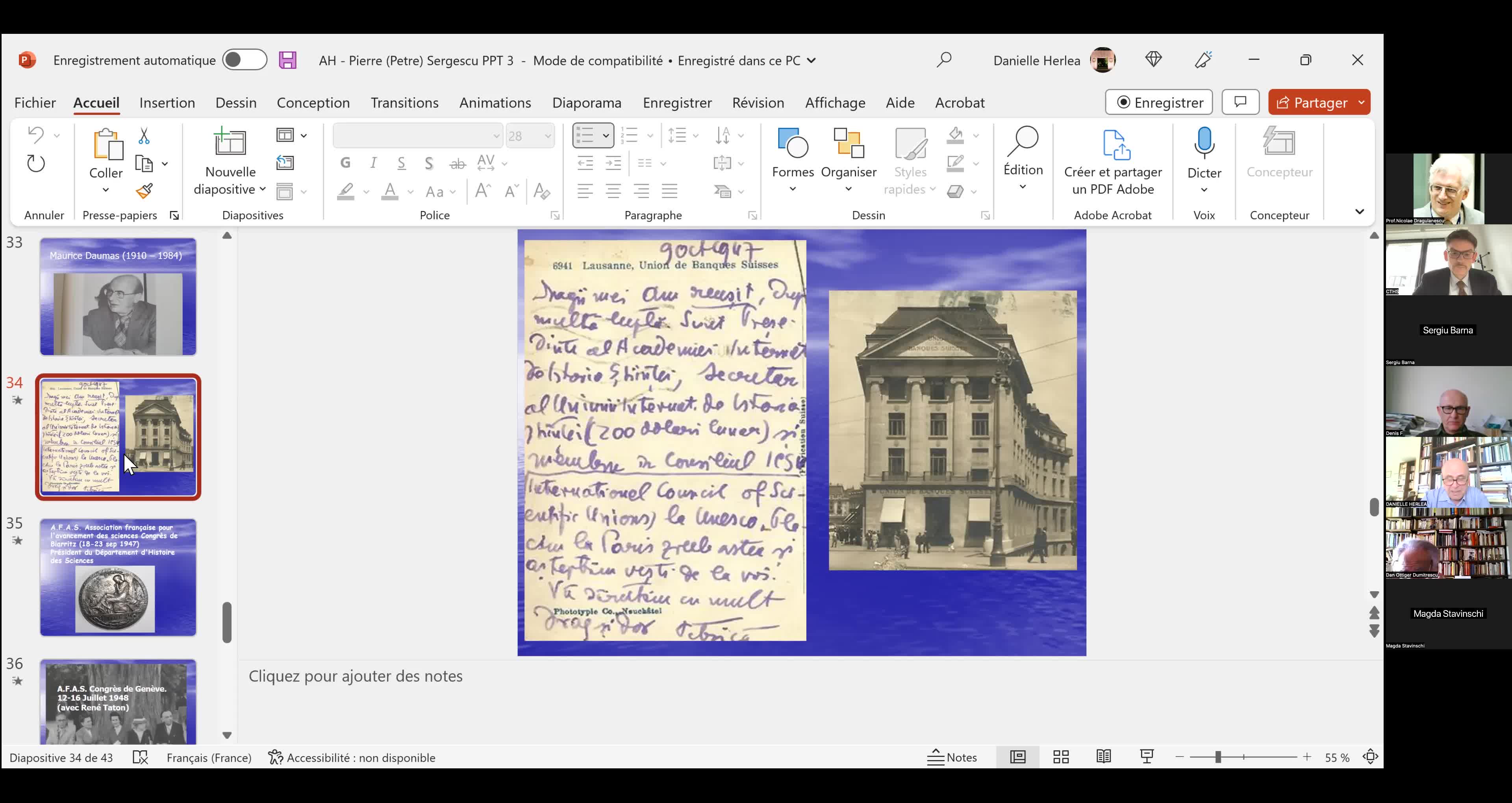Notice
I. Gentil - Le problème de Schrödinger, un point de vue analytique (Part 2)
- document 1 document 2 document 3
- niveau 1 niveau 2 niveau 3
Descriptif
Ce cours est divisé en trois parties, le but étant de comprendre le problème de Schrödinger avec un point de vue analytique. Le premier cours porte sur le problème de Schrödinger. C’est un problème de minimisation de l’entropie sur un ensemble de mesures de probabilités sur les trajectoires. Ce problème a été énoncé par Schrödinger lui même dans les années 30. Dans ce premier cours on verra les théorèmes fondamentaux sans forcément entrer dans les preuves techniques.Le deuxième cours porte sur le calcul d’Otto. Ce calcul permet, au moins de façon heuristique, de considérer l’espace des mesures de probabilités (par exemple sur une variété riemannienne) comme une variété riemannienne de dimension infinie. L’intérêt du calcul d’Otto est d’avoir un point de vue flot de gradient d’équations paraboliques classiques. Par exemple, l’équation de la chaleur est le flot de gradient de l’entropie par rapport à la métrique d’Otto. Enfin le dernier cours rapproche Schrödinger et Otto. On montre que les minimiseurs du problème de Schrödinger vérifient une équation de Newton au sens d’Otto. Cette formulation, montrée récemment par G. Conforti, permet de voir le problème de Schrödinger comme la minimisation d’un lagrangien en dimension infinie.
Intervention / Responsable scientifique
Thème
Documentation
Avec les mêmes intervenants et intervenantes
-
I. Gentil - Le problème de Schrödinger, un point de vue analytique (Part 1)
GentilIvanCe cours est divisé en trois parties, le but étant de comprendre le problème de Schrödinger avec un point de vue analytique. Le premier cours porte sur le problème de Schrödinger. C’est un
-
I. Gentil - Le problème de Schrödinger, un point de vue analytique (Part 3)
GentilIvanCe cours est divisé en trois parties, le but étant de comprendre le problème de Schrödinger avec un point de vue analytique. Le premier cours porte sur le problème de Schrödinger. C’est un
-
Ivan Gentil - Inégalités fonctionnelles et applications (Part 1)
GentilIvanInégalités fonctionnelles et applications
-
Ivan Gentil - Inégalités fonctionnelles et applications (Part 4)
GentilIvanInégalités fonctionnelles et applications
-
Ivan Gentil - Inégalités fonctionnelles et applications (Part 2)
GentilIvanInégalités fonctionnelles et applications
-
Ivan Gentil - Inégalités fonctionnelles et applications (Part 5)
GentilIvanInégalités fonctionnelles et applications
-
Ivan Gentil - Inégalités fonctionnelles et applications (Part 3)
GentilIvanInégalités fonctionnelles et applications
Sur le même thème
-
Tuan Ta Pesao : écritures de sable et de ficelle à l'Ile d'Ambrym
VandendriesscheEricCe film se déroule au Nord de l’île d’Ambrym, dans l’archipel de Vanuatu, en Mélanésie...
-
"Le mathématicien Petre (Pierre) Sergescu, historien des sciences, personnalité du XXe siècle"
HerléaAlexandreAlexandre HERLEA est membre de la section « Sciences, histoire des sciences et des techniques et archéologie industrielle » du CTHS. Professeur émérite des universités, membre effectif de l'Académie
-
Webinaire sur la rédaction des PGD
LouvetViolaineRédaction des Plans de Gestion de Données (PGD) sous l’angle des besoins de la communauté mathématique.
-
Alexandre Booms : « Usage de matériel pédagogique adapté en géométrie : une transposition à interro…
« Usage de matériel pédagogique adapté en géométrie : une transposition à interroger ». Alexandre Booms, doctorant (Université de Reims Champagne-Ardenne - Cérep UR 4692)
-
A. Mondino - Time-like Ricci curvature bounds via optimal transport
MondinoAndreaThe goal of the talk is to present a recent work in collaboration with Cavalletti (SISSA) on optimal transport in Lorentzian synthetic spaces. The aim is to set up a “Lorentzian analog” of the
-
M. Lesourd - Positive Scalar Curvature on Noncompact Manifolds and the Positive Mass Theorem
LesourdMartinThe study of positive scalar curvature on noncompact manifolds has seen significant progress in the last few years. A major role has been played by Gromov's results and conjectures, and in
-
J. Wang - Topological rigidity and positive scalar curvature
WangJianIn this talk, we shall describe some topological rigidity and its relationship with positive scalar curvature. Precisely, we will present a proof that a complete contractible 3-manifold with
-
R. Perales - Recent Intrinsic Flat Convergence Theorems
PeralesRaquelThéorèmes récents de convergence plane intrinsèque
-
J. Fine - Knots, minimal surfaces and J-holomorphic curves
FineJoëlI will describe work in progress, parts of which are joint with Marcelo Alves. Let L be a knot or link in the 3-sphere. I will explain how one can count minimal surfaces in hyperbolic 4-space
-
D. Semola - Boundary regularity and stability under lower Ricci bounds
SemolaDanieleThe theory of non smooth spaces with lower Ricci Curvature bounds has undergone huge developments in the last thirty years. On the one hand the impetus came from Gromov’s precompactness theorem
-
D. Stern - Harmonic map methods in spectral geometry
SternDanielOver the last fifty years, the problem of finding sharp upper bounds for area-normalized Laplacian eigenvalues on closed surfaces has attracted the attention of many geometers, due in part to
-
P. Burkhardt - Pointwise lower scalar curvature bounds for C0 metrics via regularizing Ricci flow
Burkhardt-GuimPaulaWe propose a class of local definitions of weak lower scalar curvature bounds that is well defined for C0 metrics. We show the following: that our definitions are stable under greater-than-second




















